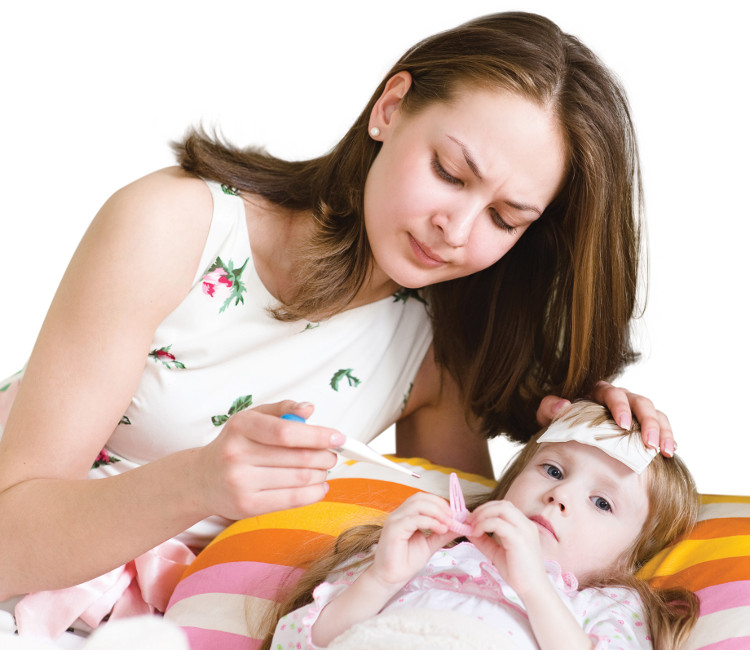Instruct mothers to identify children with pneumonia with their eyes at home
Just by observing with the naked eye, the mother can fully recognize whether her child is suffering from pneumonia to take to the hospital.
Pneumonia is the most common young disease when the weather is seasonal, especially if complications, the disease will be extremely dangerous, even death. It is worth mentioning that, when children show signs of pneumonia, parents often do not notice or ignore, or mistaken for other diseases, so they do not take to the hospital.
Associate Prof. Dr. Nguyen Tien Dung (former Head of Pediatrics - Bach Mai Hospital), said: "Pneumonia is a group of diseases of lower respiratory tract, which is a dangerous disease to the child's life when acquired.
For inflammatory diseases of the upper respiratory tract (ear, nose and throat) are usually not life-threatening. But with lower respiratory tract infections (calculated from the larynx or below) , it is extremely dangerous, can cause death for children '.

Many parents let children have severe, complicated pneumonia to go to the hospital.(Illustration).
To distinguish children with upper respiratory tract infection or lower respiratory tract infection, Associate Professor Dung also made recommendations, need to look at symptoms, such as cough, fever, sometimes with runny nose .
'When a child has a cough and fever, we sometimes cannot know if there is upper or lower respiratory inflammation, then parents need to observe the child breathing outside the chest ', Associate Professor Dung said.
Accordingly, if you have inflammation of the lower respiratory tract, causing young pneumonia will breathe faster, because now the lungs have to take more oxygen than usual.
'To know if your child is breathing faster than usual, look at the young chest, and let the watch have a second hand next to you. Ideally, when observing the mother should wait for the second hand to get the correct number 12, then start counting the breaths. When the second hand turns exactly 1 round (1 minute), stop and start to compare with the child's breathing count.
Cases of breathing for children are considered as follows : If the child is less than 2 months old, the breathing rate is more than 60 times / 1 minute, the child is from 2 months to 1 year, the breathing rate is over 50 times / minute, and if the child is from 1 to 1 5 years of breathing over 40 times / minute.
When you see the breathing of children over the threshold, you can think of children with pneumonia and prepare luggage to take children to visit ' , PGS Dung instructed.
In addition to the above, Associate Professor Dung also emphasized: 'In case of removing young shirt to monitor the chest, if parents see the mobility of the chest fast (rapid breathing), especially every time the child inhales the chest. Deep concave (the so-called concave chest compressions), then there is no need to count the breathing rate in the second hand, but to take the child right away because it is a sign that the child has severe pneumonia.
And when the child is withdrawn concave chest, accompanied by other signs such as eyes lethargy, eating, vomiting much . need to go to emergency for children immediately, because at that time children are suffering from a lack of oxygen, to Long time will cause a series of dangerous complications'.
- Pneumonia in young children - Dangerous but difficult to identify
- Pneumonia: Causes, symptoms and treatment
- Simple way to prevent pneumonia for children during the season
- Early signs of pneumonia in children during the cold season
- Notes when using antipyretics for children
- Male fox at home doing housework
- Pneumococcal pneumonia - Dangerous disease in children
- Mother often laughs, children have less allergies
- Vegetables are good for pneumonia
- More than 1 million children die from pneumonia each year
- How to prevent pneumonia when the weather is seasonal
- The sixth sense - who is more?
 Green tea cleans teeth better than mouthwash?
Green tea cleans teeth better than mouthwash? Death kiss: This is why you should not let anyone kiss your baby's lips
Death kiss: This is why you should not let anyone kiss your baby's lips What is salmonellosis?
What is salmonellosis? Caution should be exercised when using aloe vera through eating and drinking
Caution should be exercised when using aloe vera through eating and drinking